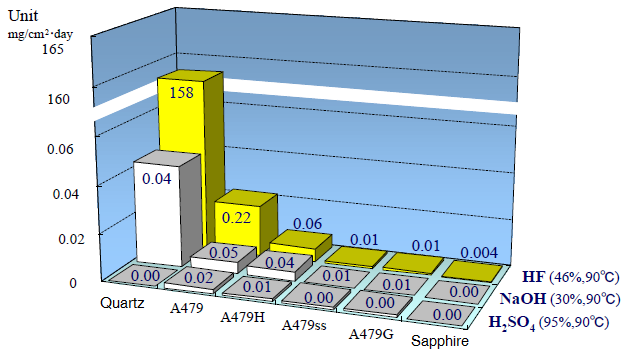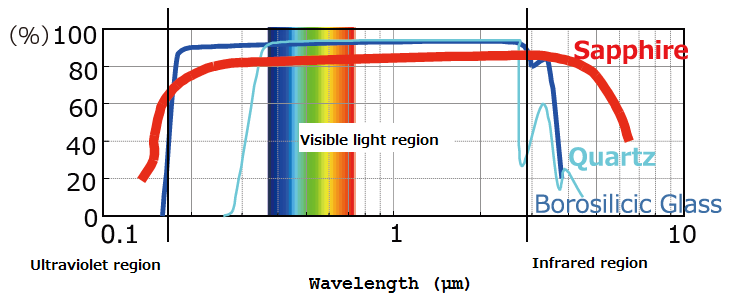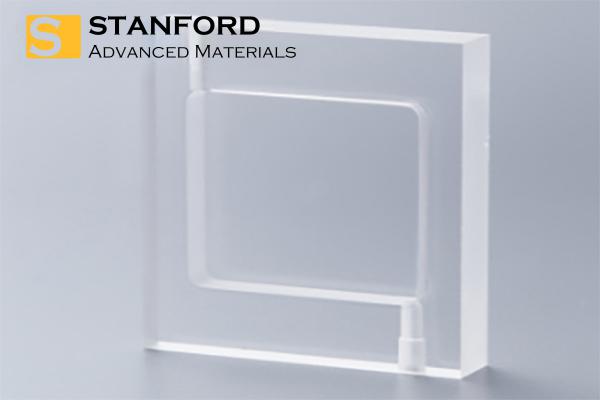Sapphire Cuvette Description:
- The entire surface is covered with sapphire for superior chemical- and plasma-resistance to avoid acid and alkaline etching.
- Transparent body with a wide light transmission wavelength from UV light to mid-infrared, ranging from 250 to 5,000 nm.
- Complex flow channels and joints are available
- Direct joining technology enables assembly with an optical prism
- Withstand the extreme natural condition of some sample solutions and variances in temperature.
Sapphire Cuvette Specifications:
A graph showing the reduction per 1 cm3 when immersed in each chemical for 24 hours.

- Transmission characteristics
*The data above are reference values and do not guarantee the characteristics of the product.

|
Material
Item
|
Sapphire
|
|
Color
|
Transparent
|
|
Content (%)
|
99.99
|
|
Density (g/cm3)
|
3.97
|
|
Vickers Hardness HV9.807N (Gpa)
|
22.5
|
|
Young's Modulus (Gpa)
|
470
|
|
Compressive Strength (Mpa)
|
2,940
|
|
Thermal Conductivity (20℃) (W/(m·K)
|
41
|
Sapphire Cuvette Applications:
Sapphire Cuvette is used to hold samples for spectroscopic measurement. It can withstand the extreme natural condition of some sample solutions and variances in temperature.
Sapphire Cuvette Packaging
Our Sapphire Cuvette is carefully handled during storage and transportation to preserve the quality of our product in its original condition.
Sapphire Cuvette FAQs
Q1: What are the common applications of Sapphire Cuvettes?
Spectrophotometry: Used for precise optical measurements in UV, visible, and infrared spectroscopy.
Chemical Analysis: Ideal for analyzing aggressive chemicals and high-purity substances.
Biotechnology: Used in applications requiring sterile conditions and resistance to biological contamination.
Pharmaceuticals: Employed in the development and quality control of drugs.
Environmental Testing: Utilized for the analysis of water and soil samples.
Q2: How do you clean and maintain Sapphire Cuvettes?
Cleaning: Use appropriate solvents (e.g., ethanol, acetone) to remove residues. Avoid abrasive materials that could scratch the surface.
Maintenance: Handle with care to avoid mechanical damage. Store in a clean, dry environment to prevent contamination.
Q3: What are the specifications to consider when selecting a Sapphire Cuvette?
Path Length: Distance the light travels through the sample (commonly 1 cm, but other lengths are available).
Volume: Sample volume capacity, which can range from microliters to milliliters.
Optical Windows: Polished surfaces through which light enters and exits the cuvette.
Wavelength Range: Ensure the cuvette is transparent at the wavelengths of interest for your application.
 Get a Quote
Get a Quote


